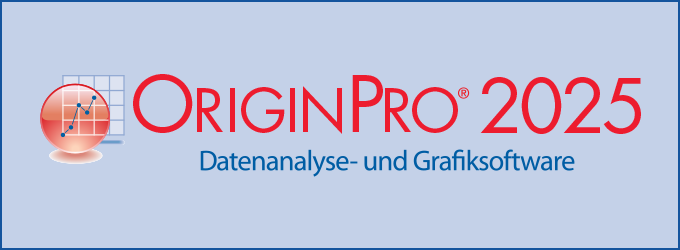Schematic Solver
Schematisches Entwurfswerkzeug, Symbolisches Lösen, Verarbeitung und Implementierung von analogen und digitalen Systemen
SchematicSolver ist ein Mathematica-Drittentwicklerpaket, mit dem symbolische Darstellungen von Systemen erstellt werden können. Mit Schematic Solver können die Systeme gezeichnet, gelöst, simuliert und implementiert werden. Dabei können die Systeme mit Hilfe von Mathematica sowohl symbolisch als auch numerisch verarbeitet werden.
Schematic Solver simuliert schnell und genau zeitdiskrete (digitale) und kontinuierliche (analoge) Systeme. Darunter sind z. B. lineare Geschwindigkeitssysteme, adaptive LMS-Systeme, automatische Verstärkungsregelung (AGC), die Quadratur der Amplitudenmodulation (QAM), square-law envelope detectors, die Thermodynamik eines Hauses, rekursive Hochgeschwindigkeitsfilter, Hilbert-Transformatoren, effiziente Multi-Frequenz-Systeme, dynamische Feedback- und Steuerungssysteme, digitale Filter und non-lineare diskrete Zeitsysteme zu verstehen.
Die symbolische Signalverarbeitung bietet:
- Die Berechnung von Umschaltungsfunktionen als Ausdrücke in geschlossener Form im Sinn von symbolischen Systemparametern.
- Das Ermitteln der Reaktion aus dem Schaltbild. Das abgeleitete Ergebnis stellt die allgemeinste Lösung dar, weil alle Systemparameter, Eingaben und Eingangsbedingungen durch Symbole gezeigt werden können.
Zu den herausragenden Funktionen von SchematicSolver gehört darüber hinaus die Entwicklung von effizienten Multi-Frequenz-Implementierungen mit Hilfe der symbolischen Domain sowie das Modellieren von Systemen, die komplexe Signale verarbeiten.
Die Eigenschaften der Systemrepräsentation in Schematic Solver können dazu verwendet werden, Implementierungscode zu generieren oder Systemeigenschaften, wie Transferfunktionen oder Impulsantworten, analytisch abzuleiten.
Die Grafik-Funktionen in SchematicSolver bieten folgende Highlights:
- Die grafische Darstellung eines Systems ist keine Grafikdatei, sondern wird bei Veränderung der Systemparameter automatisch aktualisiert.
- Ein umfangreiches Schaltbild, d. h. ein Systemmodell, kann aus Kombinationen einfacherer Schaltbilder bestehen. Dazu kann der Anwender eine Routine programmieren, um das Zeichnen beliebig vieler wiederholbarer Elemente zu automatisieren.
- Es sind Funktionen verfügbar, die Schaltbilder für beliebig Systemparameter erzeugen.
SchematicSolver ist geeignet für Lehrer und Studenten, die praxisnah lehren und lernen wollen, Ingenieure in der Industrie, die wenig Zeit für die Beschäftigung mit den theoretischen Grundlagen von Schaltbildern haben und Entwickler in der Industrie und fortgeschrittene Anwender, die neue Algorithmen und Lösungen testen.
Weitere Informationen zu Einsatzbereichen und Features erhalten Sie auf den Webseiten von Wolfram Research
Features
Zusammenspiel mit Mathematica
Systemvoraussetzungen
Downloads
Preisinformation
Features
Easy to Use and Learn
- Well-organized palettes for drawing and solving systems with a single mouse click
- The first mouse-driven interactive drawing tool entirely based on Mathematica's built-in functions, graphics primitives, and palettes
- Powerful functions constructed so that you only need to specify the minimum amount of information when modeling or solving a system
- Functions that generate schematics for arbitrary symbolic system parameters
- Visualization tools for drawing publication-quality schematics and viewing system models and responses
- The graphical representation of a system is not a static bitmap image; it changes automatically when you change system parameters
- Large schematics can consist of replicas of simpler schematics; you can write a code to automate drawing for an arbitrary number of repeated parts
- Extensive online documentation including illustrative application examples and comprehensive reference with the Help Index
- Requires a minimum understanding of basic system theory and signal processing
Powerful Modeling and Simulation Environment
- Symbolic signal processing, a unique feature of SchematicSolver not available in other software, brings you computation of transfer functions as closed-form expressions in terms of symbolic system parameters
- Computes the transfer function matrix of a multiple-input multiple-output (MIMO) system
- Finds the closed-form response (signals at nodes of the system) directly from the schematic; the derived result is the most general because all system parameters, inputs, and initial conditions (states) can be given by symbols
- Performs fast and accurate simulations of discrete-time (digital) and continuous-time (analog) systems, such as velocity servo, adaptive LMS, automatic gain control (AGC), quadrature amplitude modulation (QAM), efficient multirate, dynamic feedback and control, and nonlinear discrete-time systems, as well as square-law envelope detectors, thermodynamics of a house, high-speed recursive filters, Hilbert transformers, and digital filters.
- Models systems that work with symbolic complex signals, such as Hilbert transformers
- Carries out symbolic optimization of the system response and mixed symbolic-numeric signal processing
- Performs signal processing in a traditional numeric way
Fast and Reliable
- A single mouse click symbolically simulates, solves, or implements a system directly from the schematic, letting you set up the equations describing the system, compute the system response and transfer functions, and generate the implementation function
- Helps you generate efficient multirate implementations by working in the symbolic domain
- Provides symbolic derivations of important closed-form relations between parameters of a system, such as the power-complementary property of high-speed digital filters
- Finds closed-form expressions of output signals for known stimuli given by closed-form expressions and for certain classes of nonlinear systems
- Solves systems with unconnected elements; signals at unconnected element inputs are automatically generated as unique symbols
- Helps you design systems: for known symbolic transfer function, impulse, or step response, you can generate the schematic of the system and find the system parameters
Implementation of Discrete-Time Systems
- Automatic generation of the software implementation of linear and nonlinear discrete systems directly from the schematic
- Generated implementation functions can process symbolic samples one by one
- For a symbolic input sequence you can compute the symbolic output sequence with both the system parameters and the initial conditions (states) specified by symbols
- Sets up symbolic implementation equations directly from the schematic
- You can process a list of data samples for a given transfer function; the transfer function is automatically implemented as a single-input single-output transposed direct form 2 IIR discrete system
- Provides functions for upsampling and downsampling discrete signals and for generating most common discrete signals, such as impulse, step, ramp, sinusoidal or exponential, and random (noise) sequences.
- Includes functions to plot frequency response and sequences that represent discrete signals, discrete Fourier transform spectra, and discrete-time Fourier transform spectra
Teams Up with Other Mathematica Applications
- Access to all of the capabilities of Mathematica to perform further manipulations on results returned by SchematicSolver
- Complements Control System Professional with tools for drawing and solving systems described by block diagrams
- Provides objects, such as symbolic transfer functions, for further analysis by Signals and Systems
Zusammenspiel mit Mathematica
Das Zusatzpaket integriert sich vollständig in Mathematica.
Mathematica ist ein Softwaresystem zur Lösung von Problemstellungen, in denen Berechnungen (Numerik, Symbolik), 2D- und 3D-Visualisierungen, Modellgenerierungen und Simulationen notwendig sind. Mathematica ist ein modulares mathematisches Werkzeugsystem mit einer nahezu unendlichen Vielfalt von Funktionen und Algorithmen. Es präsentiert sich dem Anwender in einer plattformunabhängigen Benutzeroberfläche - dem Notebookinterface - mit integrierter Textverarbeitung, 4GL-Programmiersprache, offener Programmarchitektur und dynamischen, frei definierbaren Symbolpaletten.
Für den erfahrenen Mathematica Anwender wird damit das Nutzen der Funktionen nahezu
zum Kinderspiel, denn jede Funktion verhält sich wie alle anderen Mathematica-Funktionen.
Für den Neuling gibt es ein interaktives Tutorial zur schnellen Einarbeitung
in Mathematica selbst und dann jeweilige Tutorials zur Einarbeitung in das Zusatzpaket.
Viele der Funktionen des Zusatzpaketes sind in Mathematica selbst programmiert und einige liegen im Mathematica Programmiercode vor, so dass diese individuell anpassbar/erweiterbar sind.
Die komplette Dokumentation ist online verfügbar und integriert sich bei der Installation in den Help-Browser und ist damit ebenfalls vollständig in Mathematica enthalten.
Erfahren Sie hier mehr zu Mathematica.
Systemvoraussetzungen
- Mathematica 9
- Windows 2000, XP, Vista, 7
Preisinformation
Schematic Solver erhalten Sie über unseren ADDITIVE eShop oder fordern Sie ein Angebot per E-Mail an



















